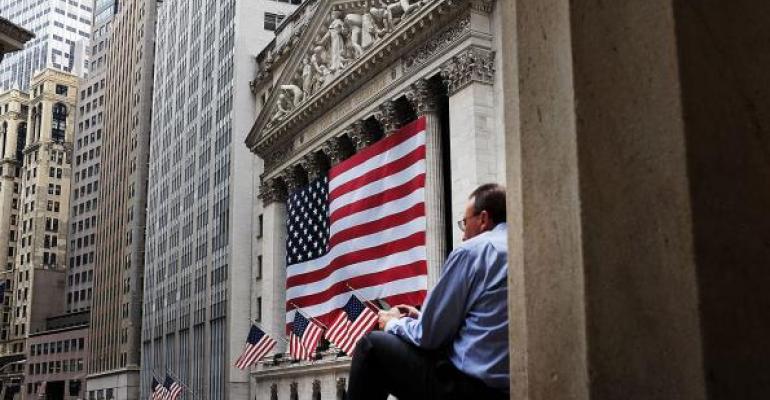By Noah Smith
(Bloomberg View) --In his confirmation hearing the other day, Treasury secretary nominee Steven Mnuchin used the word “liquidity” when talking about several financial regulatory policies. He echoed banks’ concern that the Volcker Rule -- which prohibits banks from engaging in many kinds of trading -- would reduce asset market liquidity. He also expressed support for the continued existence of Fannie Mae and Freddie Mac, the government-run companies that support the mortgage market, saying those entities create liquidity.
But what is “liquidity”? It’s one of the most important words in finance, but it’s meaning is very...fluid. Without grasping the subtlety of this concept, it’s hard to understand financial regulation. But even finance professors and investors don’t quite understand what it means.
Basically, liquidity means the ability to buy and sell an asset easily and quickly. To most traders, or people trying to sell their house, that probably seems like a pretty simple concept -- sometimes it’s easy to find a buyer, sometimes it’s costly and time-consuming. But that seeming simplicity masks the fact that markets can be liquid in very different ways.
Finance researchers use various different measures to define liquidity. One measure is bid-ask spreads -- the difference between what a buyer will payer and what a seller will accept. Another is price impact, or how much the price moves against you when you choose to buy or sell. A third measure is simply volume, which measures how many transactions are actually taking place. These three measures can tell very different stories -- for example, savvy algorithmic traders could lower bid-ask spreads, but could raise price impact by figuring out when normal investors want to buy or sell, and changing prices at a moment’s notice.
Liquidity doesn’t just have multiple definitions -- it can change from moment to moment. For example, in the early and mid-2000s, the mortgage-backed bond markets were very liquid. If you wanted to buy and sell mortgage-backed securities, collateralized debt obligations, credit default swaps, asset-backed commercial paper, or any of the other exotic assets that became notorious during the financial crisis, there would be a buyer there for you. Large banks like Citigroup Inc., or broker-dealers like Lehman Brothers Holdings Inc. and Bear Stearns Cos., would sell you these assets, buy them from you, or facilitate your transaction with a third party.
But then, as soon as the crisis hit, all this liquidity dried up in a flash. CDOs and similar assets became dead weight on balance sheets. Buyers became so scarce that nobody even knew what the assets were worth, putting banks and broker-dealers in danger of bankruptcy and prompting the Federal Reserve to do emergency lending and bailouts. Money-market funds had been built on the assumption that asset-backed commercial paper, a form of short-term debt that many companies issue to raise money for current expenses, was essentially the same thing as cash (by definition the most liquid asset of all). Suddenly, they had trouble unloading this paper. The spreads on these assets shot up as people realized how risky they really were:

That liquidity can change abruptly should give us pause about government policy measures aimed at boosting it. But there’s an even bigger problem here -- as the example of the financial crisis shows, high liquidity during one period can actually cause low liquidity later on down the line. If financial institutions hadn’t been so willing to buy and sell mortgage-backed assets in 2005 and 2006, there wouldn’t have been so many of them created in the first place, meaning that the worries about bank solvency in 2008 wouldn’t have been as severe -- and the market would have been more liquid. Another example is American International Group Inc., the insurance behemoth that insured so many mortgage-backed bonds. If this one giant company hadn’t singlehandedly made the market so liquid in the first place, there might not have been the kind of panic that required a federal bailout for AIG in 2008.
There’s a very fundamental reason why liquidity in good times doesn’t tell us much about liquidity in bad times, and why the two might even be negatively correlated. That reason is adverse selection. When someone offers to buy a financial asset, the fact that he or she wants to buy tells possible sellers that the buyer has reason to believe the asset is undervalued. That will naturally make them more wary about selling. If the market were perfectly rational, this would lead to very low trade volumes and almost no liquidity of any kind.
In the real world, people trade because they disagree. Even if I know you think a stock or bond is undervalued, I may still sell it to you, because I think it’s overvalued. This means that markets are at their most liquid when people disagree a lot. But when two people disagree, at least one of them will eventually turn out to be wrong. Eventually, markets will realize that someone made a mistake -- as banks all realized in 2008 -- and liquidity will dry up as beliefs converge.
In other words, encouraging lots of liquidity in good times might increase mistakes -- and ultimately reduce liquidity when it's needed most, in a crisis. If policy makers relax the Volcker Rule to allow banks to do more trading in normal times, they might repeat the mistakes of 2008. That’s an important danger to keep in mind as the new administration considers which elements of financial regulation to amend.
This column does not necessarily reflect the opinion of the editorial board or Bloomberg LP and its owners.
Noah Smith is a Bloomberg View columnist. He was an assistant professor of finance at Stony Brook University, and he blogs at Noahpinion.
To contact the author of this story: Noah Smith at [email protected] To contact the editor responsible for this story: James Greiff at [email protected]
For more columns from Bloomberg View, visit Bloomberg.com/view





